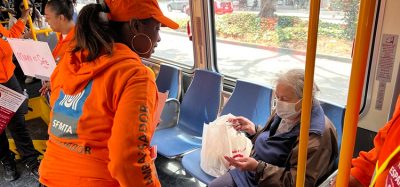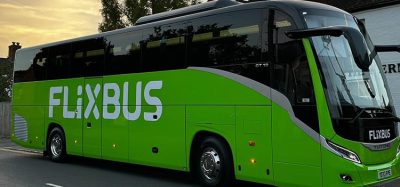Private, public, or both? The future of the MaaS revolution
- Like
- Digg
- Del
- Tumblr
- VKontakte
- Buffer
- Love This
- Odnoklassniki
- Meneame
- Blogger
- Amazon
- Yahoo Mail
- Gmail
- AOL
- Newsvine
- HackerNews
- Evernote
- MySpace
- Mail.ru
- Viadeo
- Line
- Comments
- Yummly
- SMS
- Viber
- Telegram
- Subscribe
- Skype
- Facebook Messenger
- Kakao
- LiveJournal
- Yammer
- Edgar
- Fintel
- Mix
- Instapaper
- Copy Link
Posted: 21 January 2021 | Amy Ford | No comments yet
For Intelligent Transport , Amy Ford, Vice President, Policy Programs and Mobility on Demand at ITS America and the Mobility on Demand Alliance, assesses the next steps for the complete integration of mobility services, payment, and information delivery across the mobility landscape.


Programmes
The sheer growth in the number of agencies and entities working towards advancing the MaaS ideology speaks to how the concept of seamless access to mobility is transforming how the industry interacts with customers. The recent Federal Transit Administration Accelerating Innovative Mobility (AIM) grant programme advanced no less than 10 initiatives focused on integrated trip planning and payment.
For instance, in Denver, the Regional Transportation District (RTD) and Colorado Department of Transportation will work with their mutual mobile ticketing provider, Masabi, and app partner, Transit, to develop a multimodal trip planning and payment integration feature in the Transit app. This is in addition to the private partner-led experience that RTD also developed with Uber, where individuals can purchase transit tickets through the Uber app. Uber is not the only private provider evolving in this direction, as electric mobility company Lime also just launched a new MaaS platform that allows third-party transport providers to offer their vehicles directly inside the Lime app. Private mobility providers’ interest in increasingly serving as a one-stop-shop for mobility is driving significant growth in how travellers can access mobility information, plan trips and seamlessly pay for services.
During the COVID-19 pandemic, the type of information provided to travelers has also changed, as numerous public and private mobility providers have begun to offer data to support travellers’ interests in vehicle occupancy levels or hygiene protocols, for instance. As an example, LA Metro was the first system to launch Transit’s predictive crowding feature, which has been widely used by riders.
Additionally, public transit agencies have continued to pursue touchless fare options, such as the Washington Metropolitan Area Transit Authority’s (WMATA) partnership with Cubic to recently launch SmarTrip on iPhone and Apple Watch.
It is clear that the concept of MaaS, whether jumpstarted through the public sector with private partners or led by the private sector, is continuing to expand. The question will be, as discussed in the Zipper article, whether a more direct business case for MaaS follows.


Denever’s RTD has recently launched multimodal journey planning and integrated payment system in its Transit app.
Standards
Complicating this process, however, has been the challenge of walled gardens on closed platforms that do not enable the necessary open data sharing that allows for all mobility services to be integrated. Equally, the standards and expectations for MaaS are not yet fixed and continue to evolve. This remains a focus of different efforts both stateside and in the European Union. The U.S. Department of Transportation recently commissioned research that was focused on identifying current standards related to multimodal and accessible travel, determining gaps where standards should exist but currently do not. The work focused, in part, on the standards necessary for a complete trip, including pertaining to on-demand platforms, application programming interfaces, wayfinding, safety and integrated payment.
For example, the effort identified elements for integrated payment, such as fare and fee pricing policies, interchange between operator and financial service account managers, point of sale for multimodal journey booking and ticketing, and opt‑in and privacy provisions by travellers for exchange of account information. There are clear next steps as the industry continues to move towards more holistic mobility payment integration architectures and APIs.
One example of this is the California State Transportation Agency (CalSTA) and its partners’ initiative to facilitate easy and accessible travel planning and payments across California. The California Integrated Travel Project (Cal-ITP) is focused on areas such as reducing friction in payments and creating a statewide eligibility verification programme. Early efforts to ensure access to reliable and accurate transit information, for instance, are focused on the ‘simple’ objective of supporting over 330 independent transit agencies to publish consistent transit data (GTFS and GTFS Realtime 2.0 feeds).
The EU’s current ITS Directive is also playing a key role in facilitating access to multimodal data. As noted by the MaaS Alliance, however, “access to data is the first precondition for the development of MaaS services, but data availability alone does not enable an industry like MaaS [to develop]. Today, there remains a clear need for further actions on interoperability and APIs, ticketing, cooperation, and fair competition.” A number of steps could facilitate continued adoption of MaaS, such as continued efforts to develop an open ecosystem, enhancing access to static and dynamic data, and establishing non-discriminatory access to services, including all ticket types, with fair commercial terms.
Policy
The EU continues to consider a regulatory approach as a next step to facilitating the deployment of MaaS, creating a clear framework to facilitate development and an environment for investment by the public and private sectors. This includes consideration of how to decrease market fragmentation while creating a more open market to develop more scalable services. Beyond issues of standards development and open platforms, it is also important to establish comprehensive governance frameworks for multimodal digital ticketing services, establishing the roles of public transport agencies and private mobility service providers.
The US is beginning to focus on federal-level policy. The current INVEST Act, which would serve as a base for the reauthorisation of the surface transportation bill, works to define MaaS and Mobility on Demand as eligible activities for federal funding, enabling local agencies to develop programmes and services that would better integrate mobility services, information and payment across the transportation landscape.
The question about whether MaaS is here to stay is being answered with the continued deployment of different public and private programmes. As mobility platforms continue to evolve, it is also important to consider how MaaS facilitates more equitable user access to mobility choices that will help them get to jobs, school, medical appointments, and more. The next steps to accelerate implementation could include more comprehensive standards development and policy that advances funding, partnerships or regulations to build out MaaS and seamless mobility.
Biography
As the Director of the Mobility on Demand Alliance for ITS America, Amy Ford leads the creation, strategic direction and activities of the Alliance. Prior to working with MODA, Amy served as the Chief of Advanced Mobility for the Colorado Department of Transportation, responsible for accelerating innovation programmes and policies, including connected and autonomous vehicles, mobility operations, workforce of the future, communications and other transportation technologies. She received her Masters in Public Administration from the University of Colorado.
Related topics
Business Models, Infrastructure & Urban Planning, Journey Planning, Multimodality, On-Demand Transport, Passenger Experience, Public Transport, Ticketing & Payments, Transport Governance & Policy
Related organisations
California State Transportation Agency, Colorado Department of Transportation (CDOT), Denver’s Regional Transportation District (RTD), European Union, Federal Transit Administration (FTA), ITS America, LA Metro, Lime, The Washington Metropolitan Area Transit Authority (WMATA), Uber
Related people
David Zipper








